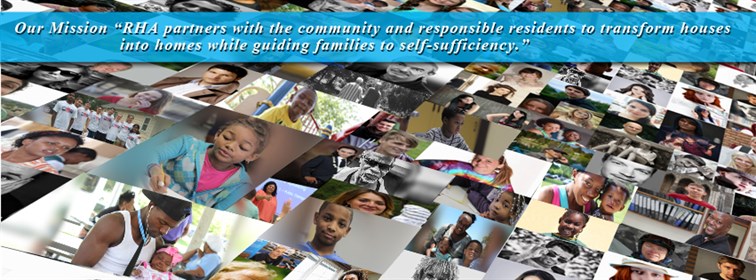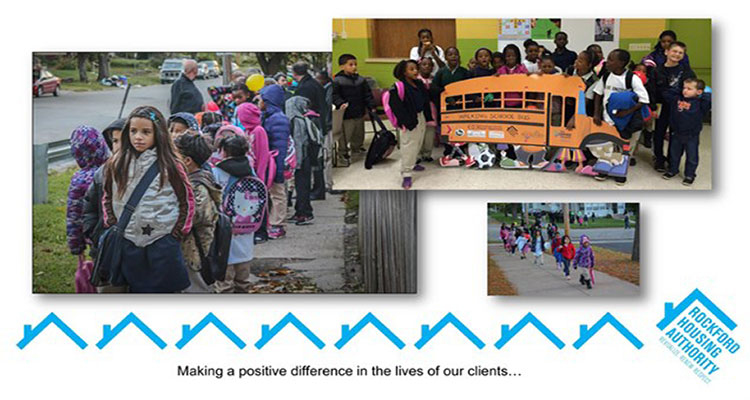- Home
- About Us
- Housing
- Resources
- Contact Us
-
-
-
Address: 223 S. Winnebago Street Rockford, IL 61102
Phone: 815-489-8500
-
-
- Updates
-

Below are two RRSTAR articles, the first from September 25th, 2015 and the second from January 20th, 2015.
The Ellis Heights Transformational plan has guided progress; showing exactly how organized goals and action lead to positive results. I am proud to have served with so many inspirational residents, neighbors and community leaders who, through this plan, united with a common vision… All too often neighborhoods become known by headlines, statistics and obstacles… no longer. From today forward we believe in creativity, in opportunity, in power, in motivation, in ourselves. From today forward, we will promote, discover, believe and mix it up! Ellis Heights will be a desirable place to live! It will be creative, safe, affordable, clean and pleasant.
There will be strong homeownership, with respectful and responsible neighbors looking out for the welfare of others. It will be a community where children are nurtured, families can grow, and seniors can enjoy their years. It will embrace the creativity of its residents and build a strong local arts economy in addition to homes for more traditional business enterprises. Ellis Heights will be a responsible community with active leadership and strong institutions. I am humbled and motivated by the strength and conviction of our residents and neighbors in seek of better. RHA will continue its efforts to organize and deliver – better that leads to greatness!
By Lindsey Holden, Staff writer, September 25. 2015 12:00PM
This story is part of the September section of Transform Monthly that focuses on the Purpose Built Community concept proposed in Rockford. The section publishes in print on Sept. 27. Read more of the stories at rrstar.com/news/transform-rockford.

ROCKFORD — As city and county officials discuss a plan to revitalize south Rockford, a similar proposal to revamp the west side of town is already in the works.
Area leaders are looking to turn an area south of downtown Rockford into a Purpose Built Community with the help of an Atlanta-based nonprofit that helps struggling cities implement plans to reduce poverty and unemployment while improving education and overall wellness. But Rockford Housing Authority has, since 2012, been trying to win grant funding from the U.S. Department of Housing and Urban Development that would similarly revitalize Ellis Heights, on Rockford’s west side.
Choice Neighborhoods is HUD’s successor to HOPE VI, a program enacted between 1993 and 2010 that helped cities rid themselves of old, dilapidated public housing complexes. HUD hopes to use Choice, which the agency started in 2010, to help cities redevelop not just housing, but entire neighborhoods. HUD in 2012 awarded RHA a $300,000 planning grant to help the agency develop an application for a $28 million Choice grant.
City Council members in January rejected RHA’s grant application (Full article below) with an 8-2 vote, but the plan the agency developed has been used as a guide for development in the area. RHA’s plans for making Ellis Heights into a Choice neighborhood involve three main improvement areas: housing, people and the neighborhood as a whole.
Choice is based around establishing a strong mixed-income community.
“HOPE VI was about tearing down and rebuilding or rehabilitating distressed housing developments and providing services to the tenants who lived in those developments,” said Rolf Pendall, head of Urban Institute’s Metropolitan Housing and Communities Policy Center. “Choice has that element at its centerpiece, but it adds neighborhood revitalization to it. They share the DNA of redoing the housing, but Choice has goals about neighborhood revitalization coming from, as well as supporting, the housing.”
Previous Choice grantees, which include Chicago’s Woodlawn neighborhood and New Orleans’ Iberville/Tremé area, drew up plans that integrated HUD-subsidized developments and potential assets that could make the communities attractive to different types of residents. In the case of Woodlawn, developers played up the neighborhood’s proximity to the University of Chicago and Lake Michigan, both of which could be tapped to improve the area.
In Ellis Heights, planners want to redevelop Fairgrounds Valley, a 210-unit public housing complex in the area, and fix up the surrounding housing stock, much of which is aging, dilapidated or has been foreclosed. RHA wants to create quality housing that will help to build up the community and make it attractive to more affluent residents, who are needed for mixed-income developments. Planners also see the area’s vacant lots as spaces that could potentially be developed into neighborhood amenities.
Choice values investment in amenities for neighborhood residents, including education and employment opportunities and healthcare providers.
Choice has especially been encouraging grantees to include educational institutions in their plans.
All of the residents in the 2010 Choice grantee sites, except for those in Seattle’s Yesler neighborhood, had high levels of school choice. This means there wasn’t as much of a reason for residents to rally around an area educational facility, which is something HUD wants to encourage in the future.
“If all the kids in your development go to school all over the city, then all the kids in your school in the neighborhood come from all over the city,” Pendall said. “It’s really hard to align the housing redevelopment with improvements in the school.”
Ellis Heights planners especially want to push early childhood education, due to the presence of Lewis Lemon Elementary School. Rockford’s Choice plan would encourage family involvement in schools and push various educational providers, including Rockford Public Schools, Rock Valley College and the Workforce Investment Board, to better coordinate efforts in the area.
Planners envision a business training hub, which could serve as an incubator for small businesses and provide job training classes.
A key aspect of the Choice program is its focus on building neighborhood partnerships.
HUD hopes communities that receive Choice grants will use them to create relationships between private and public entities that would propel the area even after the federal funding runs out.
“It’s not a process that happens overnight,” Pendall said. “It’s not a process that you can take care of overnight. The theory is that the organizations involved in helping the neighborhood improve will get better at working together as a result of having the grant. And they’ll see the neighborhood and the development in different ways than they would have in the absence of the grant, and that they’ll continue to work together, getting more funds from elsewhere, and that the city will devote its funds, after the grant expires.”
As groups learn to align their interests, Choice planners hope neighborhood improvements will begin to attract a mix of incomes and people, ranging from the working poor to homeowners.
“Choice will increase activity and density,” Pendall said. “It produces a different kind of neighborhood. There are more people who will live there at the end than at the beginning of the process, and so that means there’s more market for retail, there’s more reason for the public sector to enhance services there. Everything makes a bit more economic sense. It’s more efficient.”
Lindsey Holden: 815-987-1339 | lholden@rrstar.com | @lindseyholden27
By Kevin Haas/Rockford Register Star
Posted Jan 20, 2015 at 10:03 PM
Updated Jan 22, 2015 at 10:45 AM
ROCKFORD — City Council members on Tuesday rejected a public housing plan after saying it didn’t do enough to break up the concentration of poverty on Rockford’s west side.
Aldermen voted 8-2 against chasing a $28 million federal Choice Neighborhoods grant meant to help transform the Ellis Heights neighborhood. The grant included money for redevelopment work within the neighborhood, job training, early education, parent engagement and mentoring, a walking path along Kent Creek, parole reentry programs, a teen center and other improvements. But the biggest sticking point for aldermen was the $7 million that would be dedicated to replacement of the Fairground Valley public housing complex on the city’s west side.
The plan called for the demolition of Fairgrounds and the development of 270 housing units on three sites: the current Fairgrounds land, Newburg Road and New Town Drive. Aldermen felt that it didn’t go far enough to scatter the concentration of poverty. Ninth Ward Ald. Teena Newburg said public housing should be scattered throughout all 14 wards in the city. Fifth Ward Ald. Venita Hervey said the proposal kept poor people stacked together in one area.
“They can very, very quickly become subject to predators who peddle drugs, who peddle prostitution, who prey on children and who create crime and chaos. That’s what I don’t want to see,” Hervey said.
Rockford Housing Authority Executive Director Ron Clewer said the grant money would have helped deconcentrate poverty and housing, as well as bring jobs and neighborhood improvement.
“We agreed about the strategies for jobs, the strategies for people, the strategies for education, the strategies for neighborhood improvement, but the sticking point was public housing — in which we were removing public housing and creating a sustainable form of housing that works throughout our nation,” Clewer said.
Clewer said it was short-sighted to take away the opportunity to bring $28 million to Rockford because of a disagreement over the plans for Fairgrounds, especially with local revenue resources so few and far between.
“We are, at present, stuck with what we have and I don’t think that’s fair to the people that live there and I don’t think it’s fair to the people in this community.”
Mayor Larry Morrissey said he shared the concerns of aldermen about the density of the Fairgrounds replacement plan and would not have approved the development itself. However, he was in favor of moving a grant application forward because he didn’t want to miss out on the chance for federal funding to help in the redevelopment of the neighborhood.
“We may not move the Choice application forward, but we’re going to have to come back to this and deal with ‘what do we do given our options,’ ” Morrissey said.
Clewer said the Fairgrounds replacement plan was not contingent on receiving the grant, but it provided extra money needed to fill the funding gap. He said the replacement of Fairgrounds will have to go forward in several phases.
“It will just take more work now,” Clewer said.
Kevin Haas: 815-987-1410 | khaas@rrstar.com | @KevinMHaas
#IamRockford #RHA #TransformRockford #ChoiceNeighborhoods